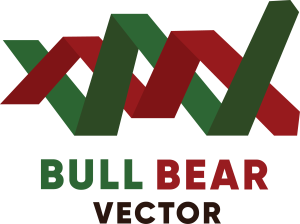1. Introduction to Options Trading
Options trading involves the buying and selling of options, which are financial contracts that give the buyer the right, but not the obligation, to buy or sell an underlying asset at a specified price on or before a certain date. This type of trading offers high flexibility and can be used for hedging risks or speculating on the price movements of assets. Understanding the mechanics of options, such as the types of options (calls and puts), strike prices, expiration dates, and intrinsic versus extrinsic value, is crucial for traders to navigate this complex market effectively.
2. What are Options Breakeven Charts?
- Definition: Visual tools that identify the stock price at which an options strategy neither gains nor loses money.
- Purpose: Help traders visualize the outcome of their trades across different stock prices at expiration.
- Components:
- X-Axis: Stock price
- Y-Axis: Profit or loss
- Usefulness: Especially valuable for complex strategies involving multiple options, such as spreads or combinations, where they simplify understanding.
3. Understanding Options Breakeven Points
- Definition: The stock price at which an options position covers all associated costs, turning neither a profit nor a loss.
- Calculations:
- Call Option: Breakeven point = Strike price + Premium paid
- Put Option: Breakeven point = Strike price – Premium paid
- Purpose: These calculations help traders identify crucial price thresholds for profitability or loss limitation.
4. The Importance of Breakeven Analysis in Options Trading
- Role in Trading: Provides a clear profitability threshold, aiding in effective risk management.
- Benefits:
- Enables traders to set precise goals and stop-loss orders.
- Crucial for managing risks in strategies with potentially unlimited losses, such as naked options positions.
5. How to Construct an Options Breakeven Chart
- Tools Needed: Spreadsheet software like Microsoft Excel or specialized trading platforms with charting tools.
- Steps:
- Plot the total cost of the options trade against various possible stock prices at expiration.
- Include all relevant costs, such as premiums and commissions, to ensure accuracy.
- Objective: Allows traders to visually assess potential profit or loss scenarios based on stock price movements at the option’s expiration.
6. Advanced Concepts: Volatility and Time Decay
- Volatility significantly affects the breakeven points because it influences the premium and hence the price range in which an option is profitable.
- Time decay, or theta, is the rate at which an option’s value diminishes over time, affecting options differently based on their moneyness and time to expiration.
Conclusion and Further Resources
Understanding breakeven charts is fundamental for mastering options trading. For those seeking to delve deeper, resources such as books like “Options as a Strategic Investment” by Lawrence G. McMillan and online courses from platforms like Investopedia can provide further learning opportunities.
Addendum: FAQs on Options Breakeven Charts
- Strike Price: The price at which the holder of an options contract can buy (in the case of a call) or sell (in the case of a put) the underlying asset when exercising the option.
- Premium: The price paid by the buyer to the seller to acquire the rights granted by the option.
- Volatility: A statistical measure of the dispersion of returns for a given security or market index, often measured by the standard deviation of historical daily price changes.
- Time Decay (Theta): The rate at which the value of an option decreases over time as it approaches its expiration date.
- Intrinsic Value: The inherent value of an option, calculated as the difference between the strike price of the option and the current price of the underlying asset, assuming the option is in-the-money.
- Extrinsic Value: The part of the option’s price that exceeds its intrinsic value, reflecting the probability of the price of the underlying asset increasing above the strike price (for calls) or decreasing below the strike price (for puts) before expiration.
- In-the-Money: Describes an option with intrinsic value. A call option is in-the-money when the underlying asset’s price is above the strike price; a put option is in-the-money when the underlying asset’s price is below the strike price.
- Out-of-the-Money: Describes an option that would lead to a negative cash flow if it were exercised immediately. A call option is out-of-the-money when the underlying asset’s price is below the strike price; a put option is out-of-the-money when the underlying asset’s price is above the strike price.
- At-the-Money: Describes an option where the price of the underlying asset is equal to the strike price.
- Breakeven Point: The stock price at which an option strategy results in neither a profit nor a loss. For a call option, this is typically the strike price plus the premium paid; for a put, it is the strike price minus the premium paid.

